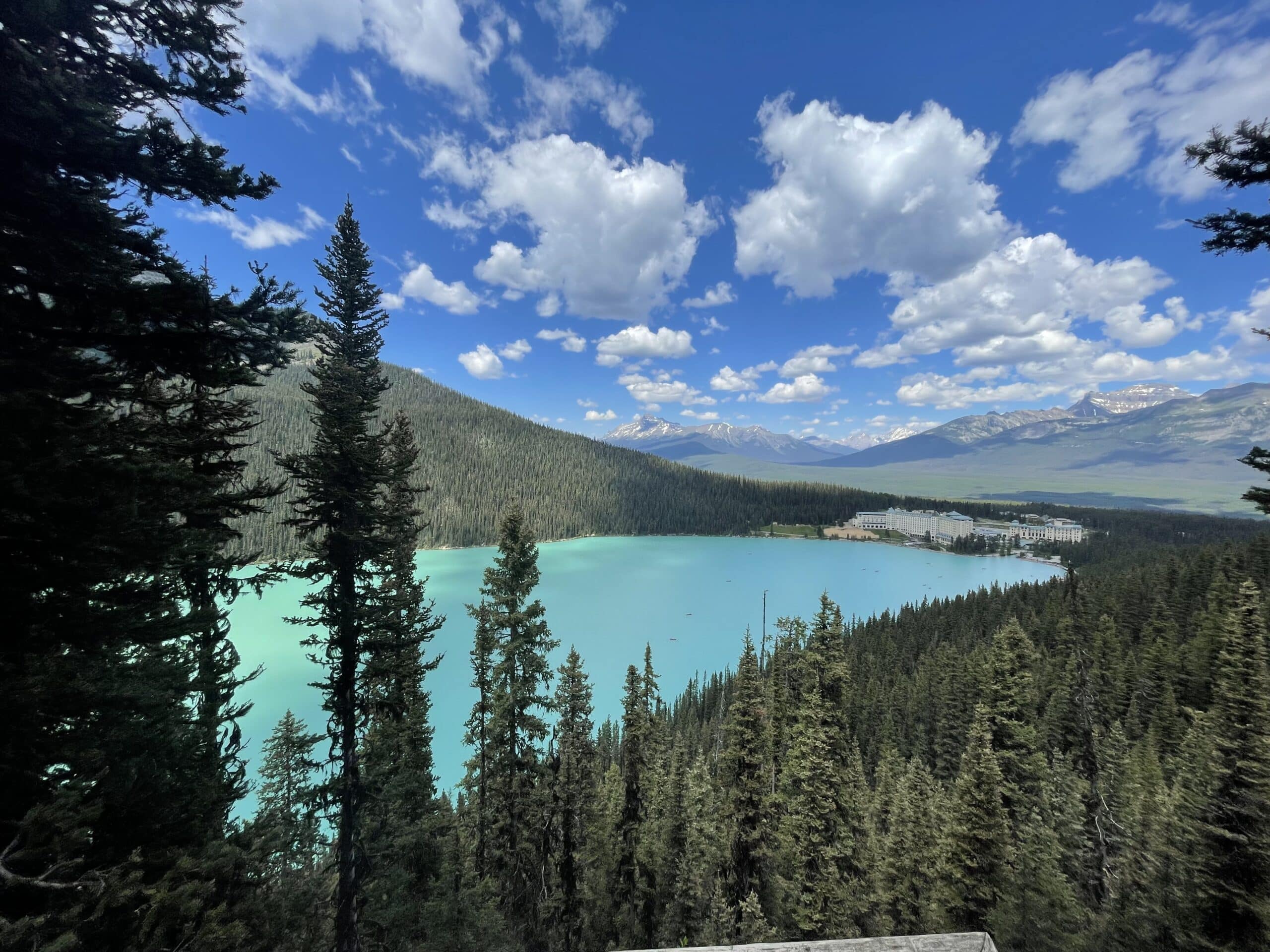1. Glacier-Melt and Rock Flour
The Canadian Rockies are blessed with numerous glaciers, whose icy waters continuously flow down the mountainsides. As these glaciers melt, they release fine particles known as “rock flour“ into the surrounding lakes and rivers. The rock flour consists of finely ground rock sediments, primarily composed of minerals like silt, clay, and glacial till. These minuscule particles remain suspended in the water, scattering sunlight and giving it a unique turquoise or milky blue appearance. Moraine Lake and Peyto Lake are ronewned examples where the glacier melt and rock flour create vivid blue tones that seemingly defy reality.
2. Light Absorption and Refraction
The vibrant blue hues found in the Canadian Rockies are also a result of light absorption and refraction. When sunlight reaches the surface of a lake or river, the water absorbs colors from the spectrum. While most colors get absorbed, shades of blue have a longer wavelength and tend to scatter less. As a result, the blue light is reflected back to our eyes, intensifying the perceived blueness of the water. This phenomenon, known as selective light absorption, contributes to the mesmerizing blue tones found in iconic lakes like Lake Louise and Emerald Lake.
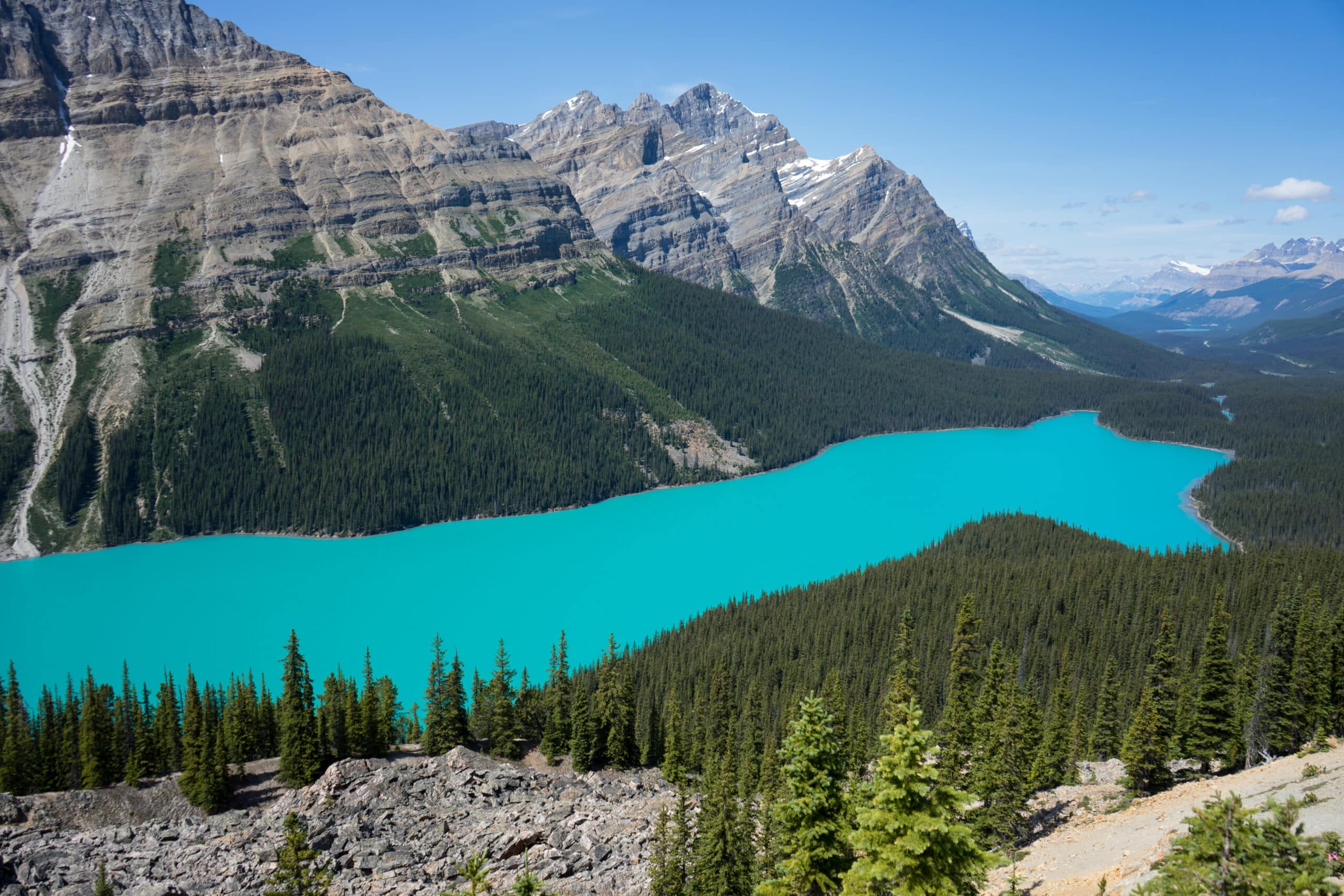
3. Glacial Milk
Another factor contributing to the stunning blue colors of the Canadian Rockies is the presence of “glacial milk.“ Glacial milk refers to the cloudy, turquoise-colored water resulting from the mixing of glacier meltwater and finely ground rock flour. As glacial meltwater carries sediments, it creates a suspension in the water, scattering light and causing it to appear blue. The combination of glacial milk and the reflective properties of the suspended rock flour particles results in lakes such as Lake Moraine and Lake Louise exibiting breathtaking shades of blue.
4. Sunlight and Atmospheric Conditions
The vivid blue hues of the Canadian Rockies can also be influenced by sunlight and atmospheric conditions. The angle and intensity of sunlight play a significant role in the color perception of lakes and rivers.When sunlight strikes the water surface at a specific angle, it enhances the reflection and refraction of blue light, intensifying the colors. Additionally, factors such as cloud cover, air quality, and the presene of minerals or algae can influence the appearance of the water, causing subtle variations in blue shades.
Discover the Top Crystal Blue Lakes in the Canadian Rockies
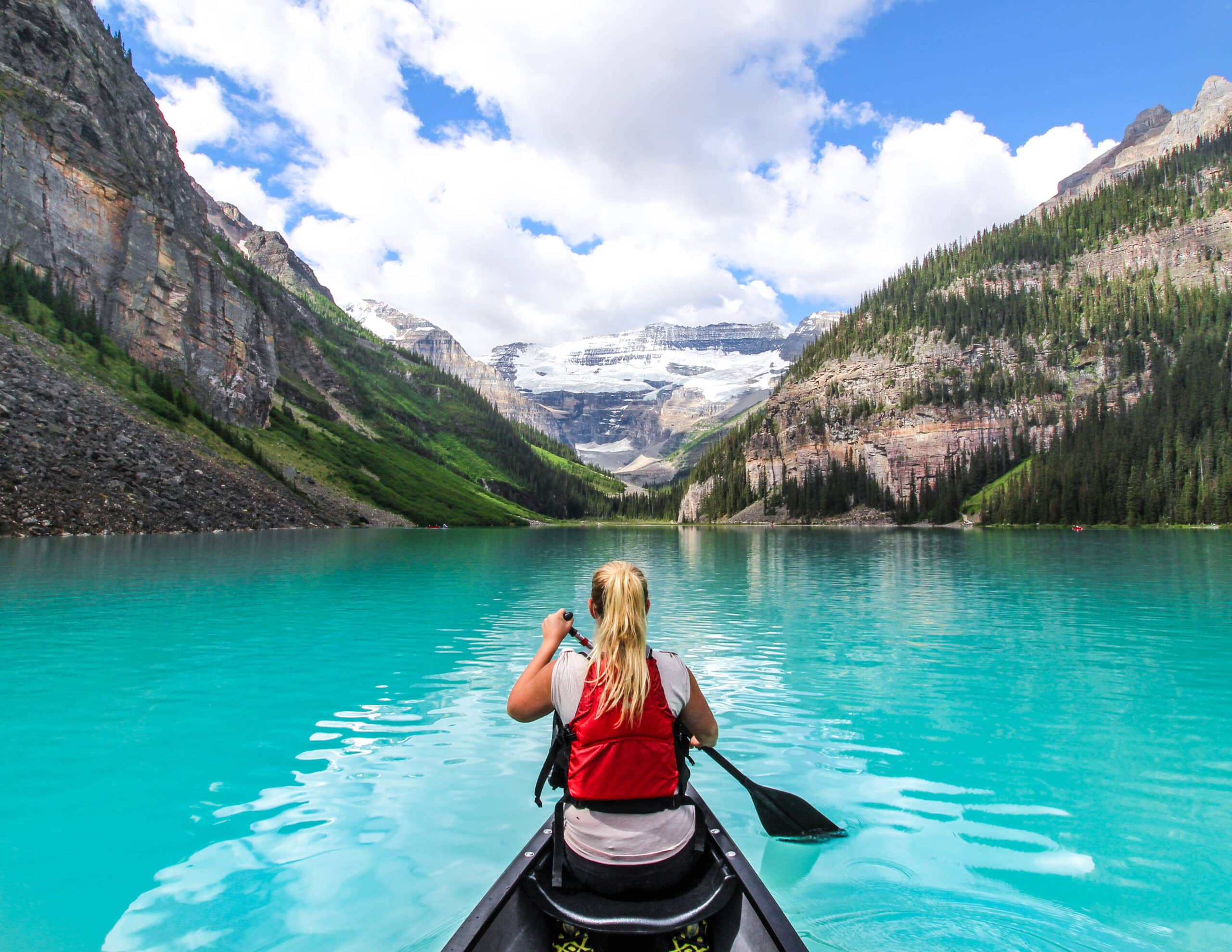
1. Lake Louise: A Timeless Gem:
Lake Louise is undoubtedly one of the most iconic and picturesque lakes in the world. Nestled in Banff National Park, its pristine turquoise waters reflect the surrounding snow-capped peaks, creating a postcard-perfect scene. This glacier-fed lake owes its dazzling blue hue to the fine particles of rock flour, resulting from glacial erosion. With the majestic Fairmont Chateau Lake Louise as its backdrop, this lake truly epitomizes natural beauty.
2. Moraine Lake: Nature’s Gemstone:
Located in the Valley of the Ten Peaks within Banff National park, Moraine Lake is often regarded as a gemstone amidst the Canadian Rockies. Its intense blue color, complemented by a ring of snow-capped peaks, makes it a photographer’s paradise. Glacial silt and light refraction combine to create a visual spectacle that is nothing hort of enchanting. The journey to Moraine Lake is equally captivating, with a winding road leading to this hidden gem.
3. Emerald Lake: A Gem in Yoho National Park:
Nestled within the enchanting Yoho National Park, Emerald Lake lives up to its name as a shimmering jewel. Surrounded by lush forests and towering mountains, this pristine lake showcases a mesmerizing shade of greenish-blue. Like its counterparts, Emerald Lake owes its stunning color to the presence of glacial silt. As glacial meltwater flows into the lake, it carries fine particles that disperse sunlight, revealing the captivating hues that have captivated travelers for generations.
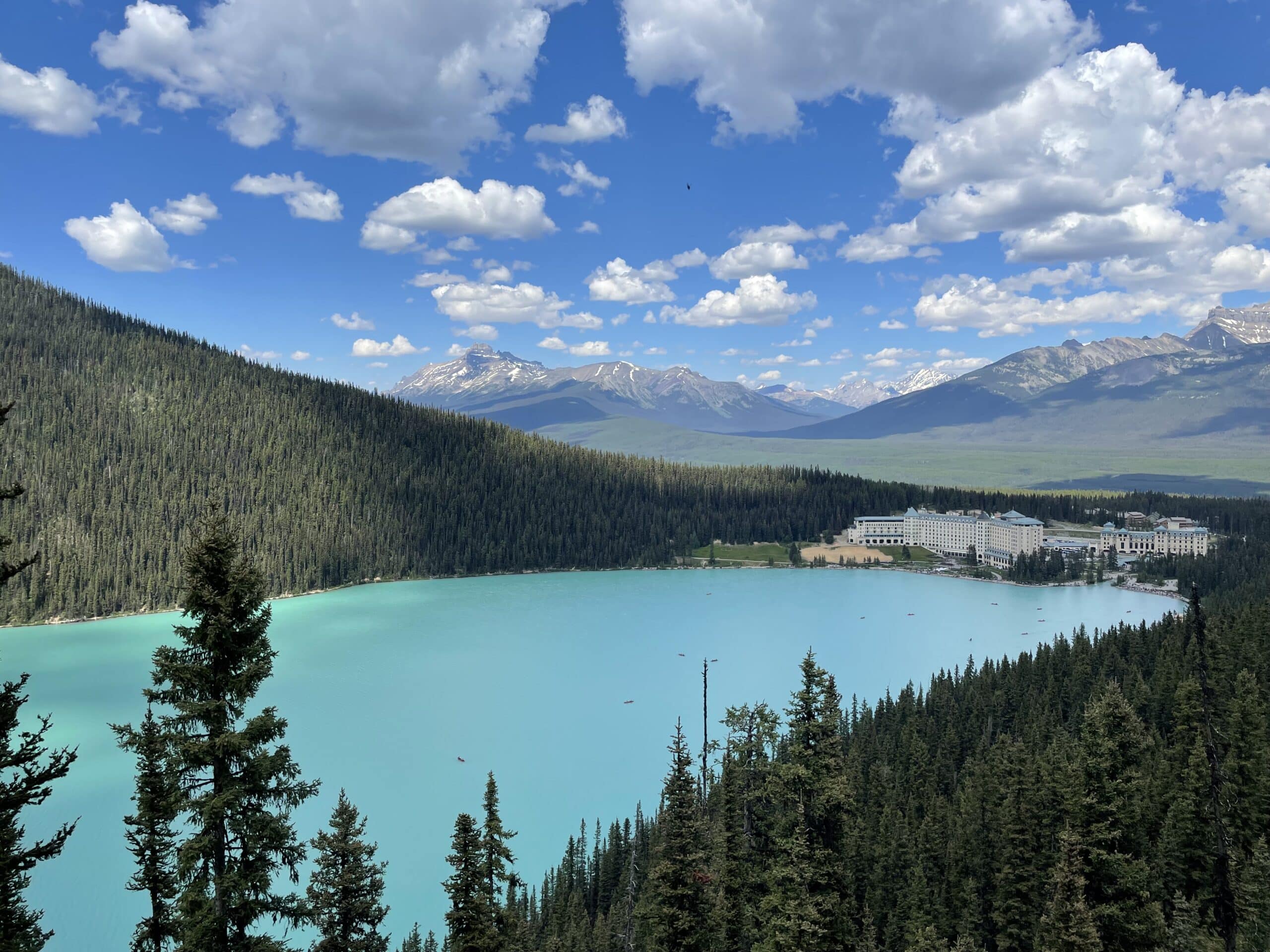
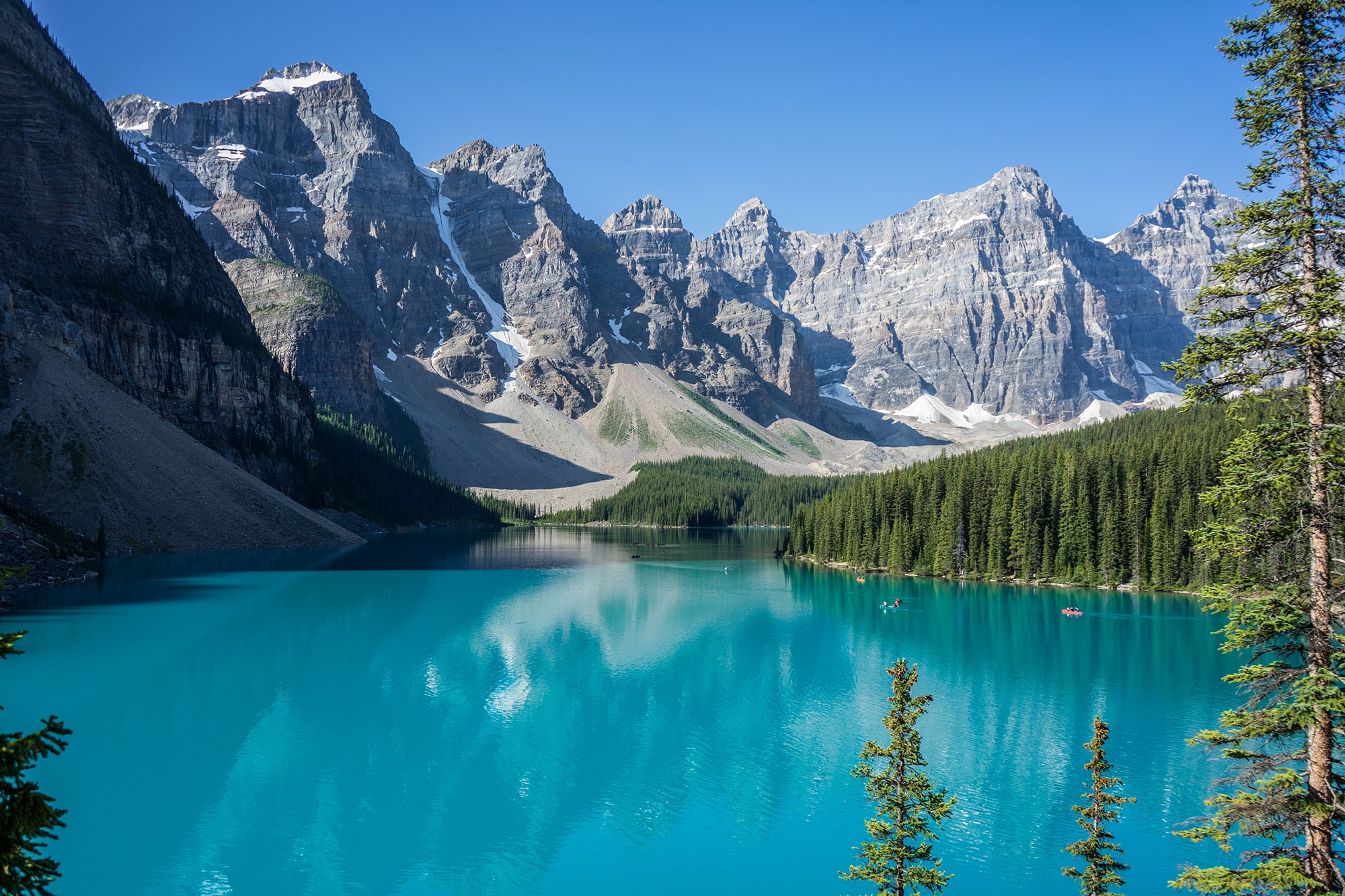
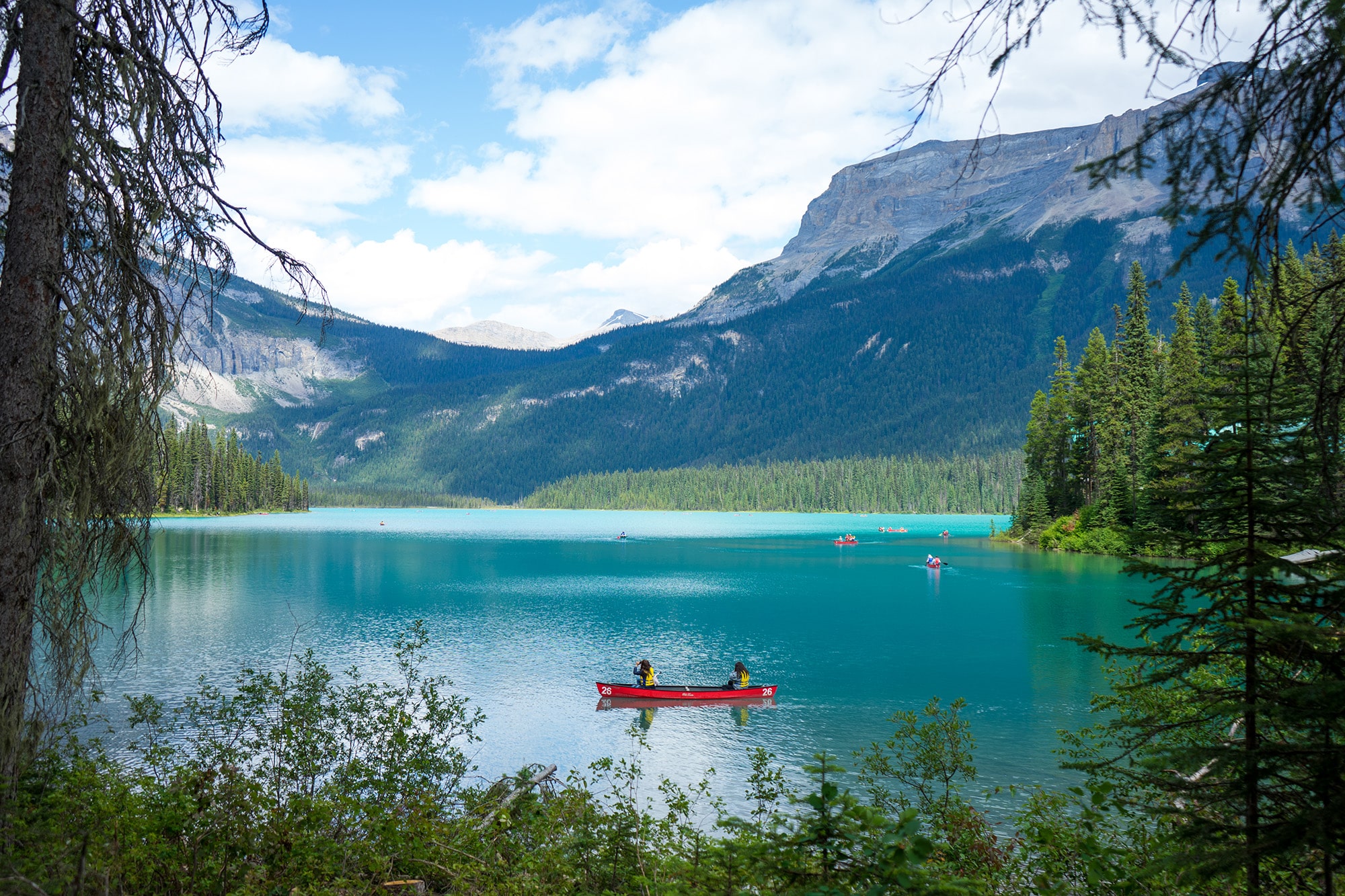
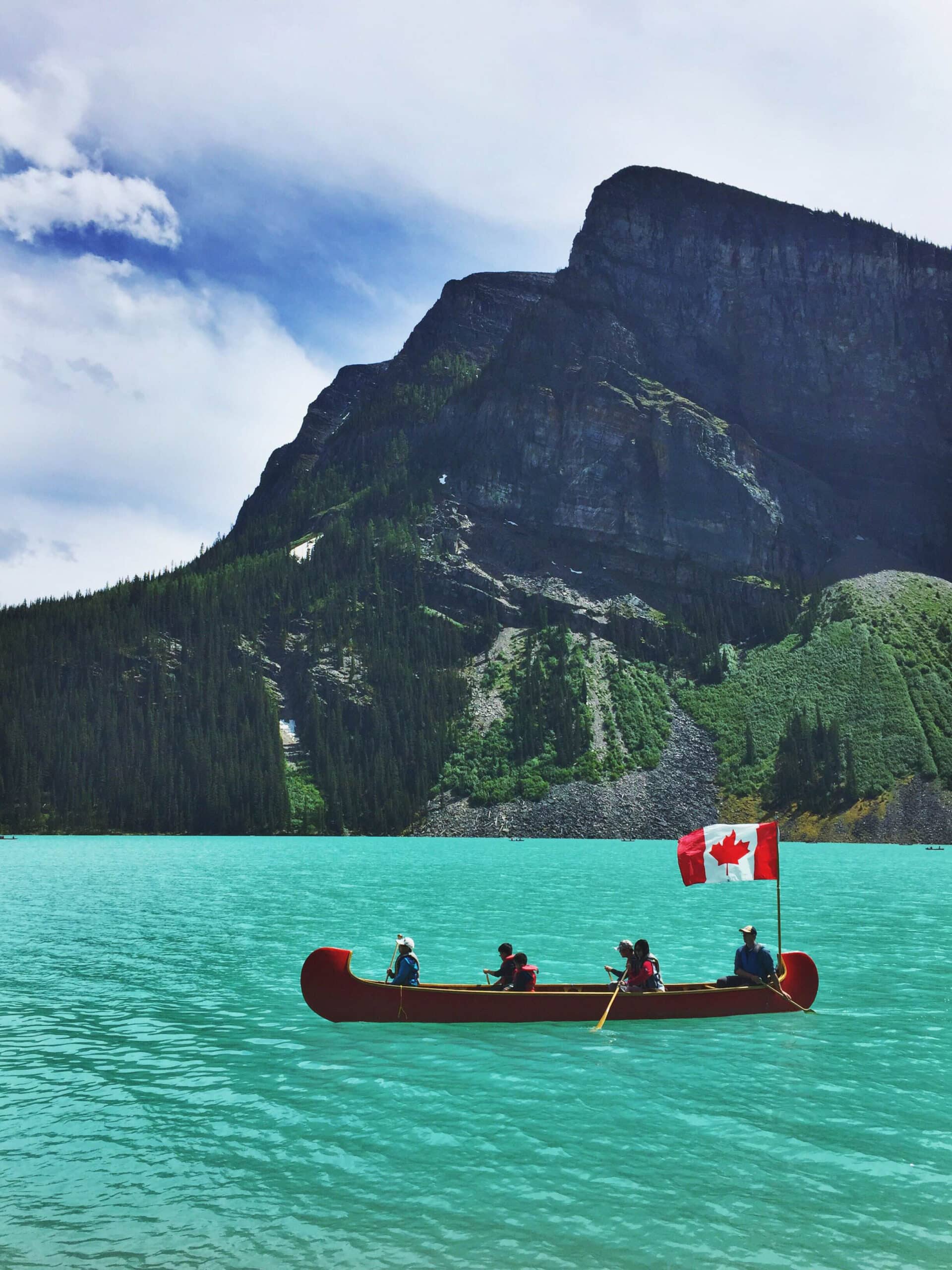
4. Peyto Lake: A Painter’s Palette:
Peyto Lake, situated in Banff National Park, showcases nature’s artistic prowess. Its distinctive shape and vibrant turquoise hue make it a true masterpiece. The lake owes its mesmerizing blue color to the glacial rock flour that flows into it from the surrounding Peyto Glacier. Visitors can enjoy panoramic views from the Bow Summit lookout, where the stunning lake reveals itself against a backdrop of sprawling mountain ranges.
5. Maligne Lake and Spirit Island: Serenity in Blue:
Nestled within Jasper National Park, Maligne Lake possesses an ethereal beauty that captivates all who lay eyes upon it. The azure waters, sourced from glacial meltwater, perfectly reflect the surrounding Rocky Mountains. A visit to Spirit Island, a small, tree-covered islet located in the lake’s heart, offers an enchanting experience that combines tranquility natural splendor, and an indescribable sence of serenity.
6. Bow Lake: Nature’s Mirror:
Bow Lake, located along the Icefields Parkway, is a tranquil oasis of crystalline blue waters. As one of the largest lakes in Banff National Park, it offers a perfect mirror reflection of the awe-inspiring Crowfoot Glacier and the surrounding peaks. This glacial-fed lake is a testament to the incredible beauty that can be found within the Canadian Rockies, where nature’s palette of blues meets the majesty of towering mountains.
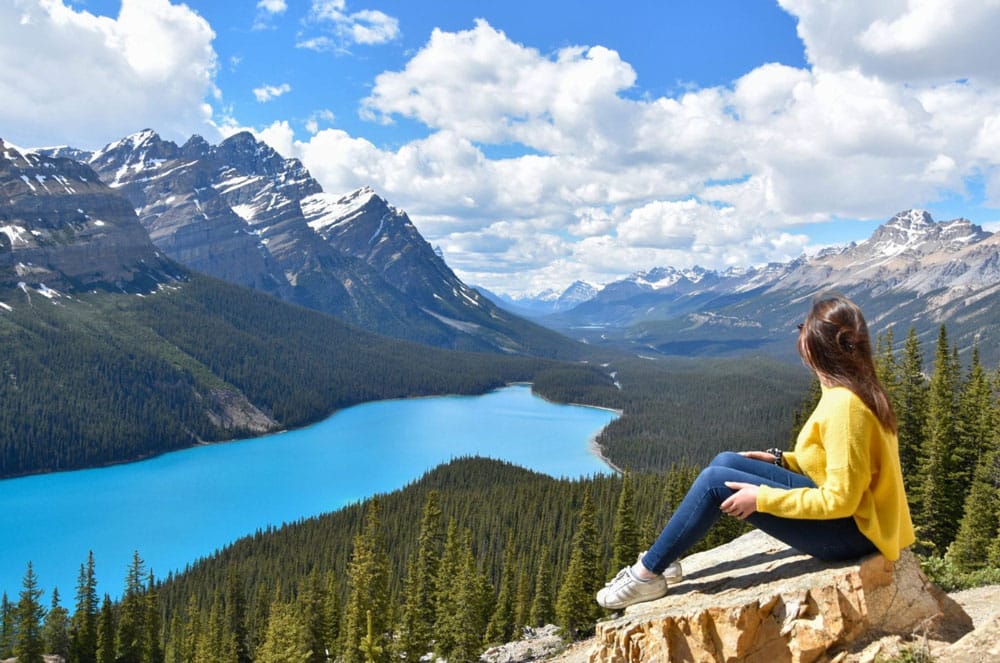
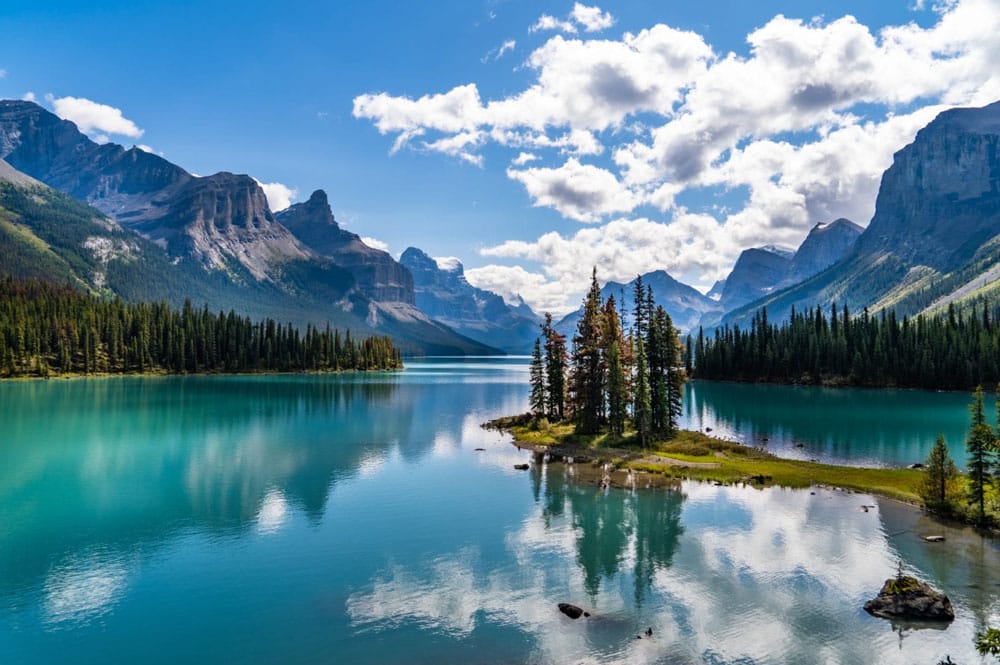
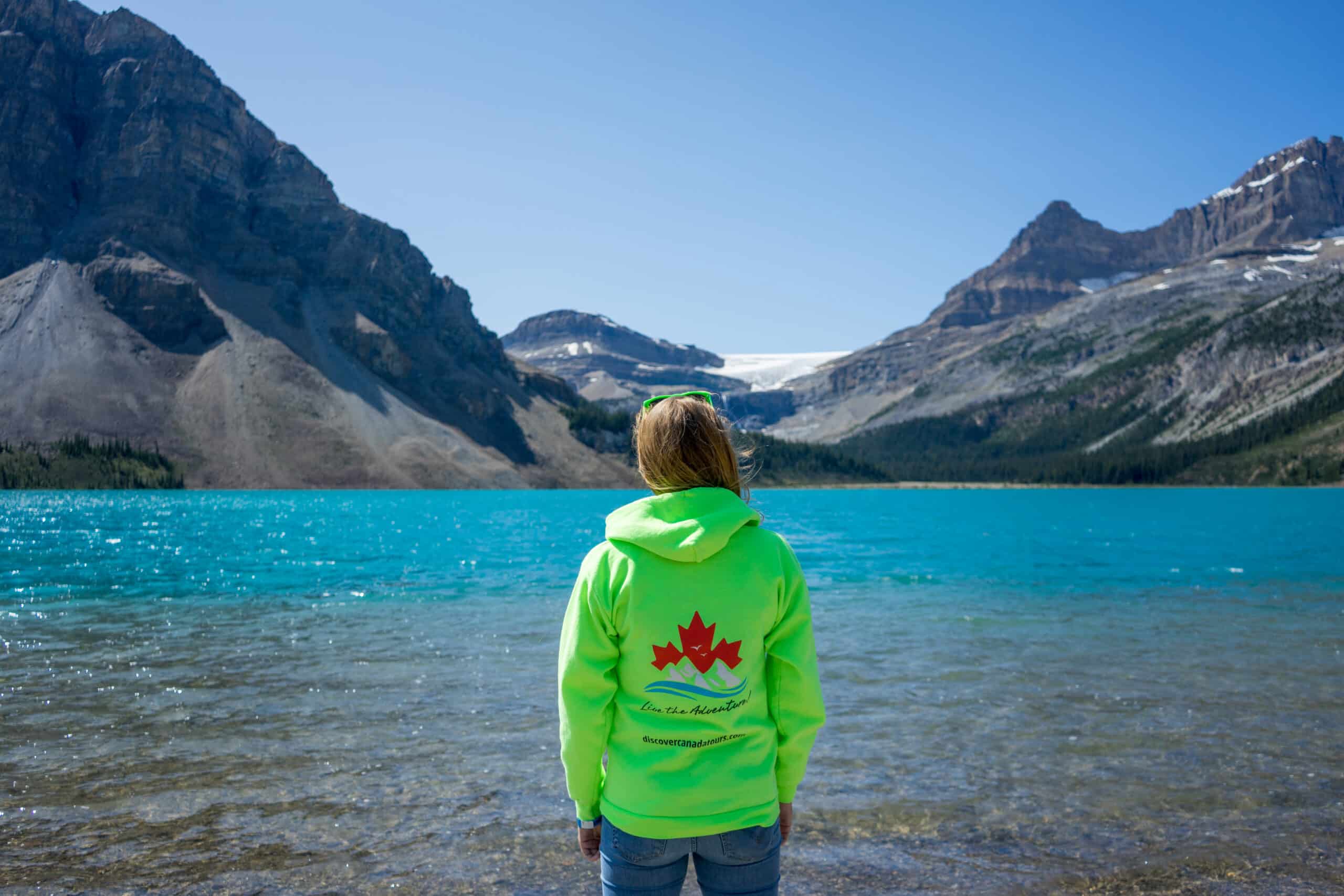
Imagine standing on the shores of Lake Louise, surrounded by towering peaks, or gazing at the vibrant blue waters of Moraine Lake nestled in the Valley of the Ten Peaks. Picture yourself in awe of the turquoise hues of Peyto Lake or embracing the peacefulness of Emerald Lake. And don’t forget the grandeur of Maligne Lake, the largest natural lake in the Canadian Rockies.
So, don’t let this once-in-a-lifetime opportunity slip away. Plan your trip to the Canadian Rockies with Discover Canada Tours and immerse yourself in the mesmerizing beauty of its unique lakes.
Written by DCT. Photos courtesy of ©Lisanne Smeele, ©Pursuit/Noel Hendrickson , ©Destination Travel Alberta,




